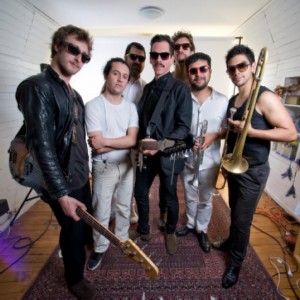[tabbed_section style=»default» alignment=»left»][tab title=»Pestaña» id=»1504561536-1-7″ tab_id=»1504561594397-2″]
Hasta hoy, Silvestre se mantiene como una propuesta de rock de clara raíz chilena. Nicolás Torres, ex integrante de Entreklles y Petinellis, pasó de la batería a guitarras y voz y formó la banda el 2005 junto a Giovanni Colecchio (batería), Miguel Navarro (bajo), Pablo Sapiaín (teclados) y Sebastián Aracena (guitarra). En menos de cinco meses desde su asociación ya habían debutado en La Batuta y entrado a estudio a grabar su primer álbum, Silvestre (2005). A esa producción le siguió Me están buscando (2007), la cual contó con invitados como Camilo Salinas y Pablo Ilabaca, y consolidaron un espacio en los circuitos en vivo y en las radios, con canciones como «Chirimoya triste» y «Crazy amor
‘»To this present day, the band Silvestre remain as a clear example of Chilean rock at it’s best. Nicolás Torres, formerly the drummer of the band’s Entreklles and Petinellis, switched to guitars and vocals and formed Silvestre in 2005 with Giovanni Colecchio on drums, Miguel Navarro (bass), Paul Sapiaín (keyboards) and Sebastian Aracena (guitar). In less than five months Silvestre they had already debuted in the venue La Batuta and entered the studio to record their first album, Silvestre (Wild, 2005). They followed this with their second record – Me están buscando (I’m being looked for, 2007), which featured guest performances by Camilo Salinas and Paul Ilabaca, and included songs like «Chirimoya Triste» and «Crazy Amor» that helped to strongly establish the band in the live music circuit and on the radio
Silvestre carries the slogan of «cueca, cumbia and rock & roll » Unlike many bands, Silvestre may be seen in venues like the Opera Cathedral (a classic theatre with auditorium and limited public access), and the next day playing a “ramada” in the Bío Bío flea market, for an audience in the street, that has nothing to do with rock music . It is precisely this duality that was reflected in their third album, Tuya, mía, para mí, para ti, (Yours, mine, for me, for you, 2009) The album was recorded in the south of Chile, and included two volumes: one of original songs and the other covers of Chilean and Latin American songs, reinvented in their unique Silvestre style. These versions having interpretations with cumbian arrangements for «Te recuerdo Amanda” from Victor Jara and ranchers sounds for «Albertío» Violeta Parra.
The performed live at the Festival Huaso Olmué in 2010, and began an intense schedule of gigs, including a debut European tour during the first half of 2011. They released their fourth album, Galopa, (Gallop, 2013) and were re-invited to the festival Huaso Olmué to participate in a tribute to the Chilean band Los Jaivas and played the song «Sube a nacer conmigo hermano». The song led to winning that years’ competition at the festival.

Deja una respuesta